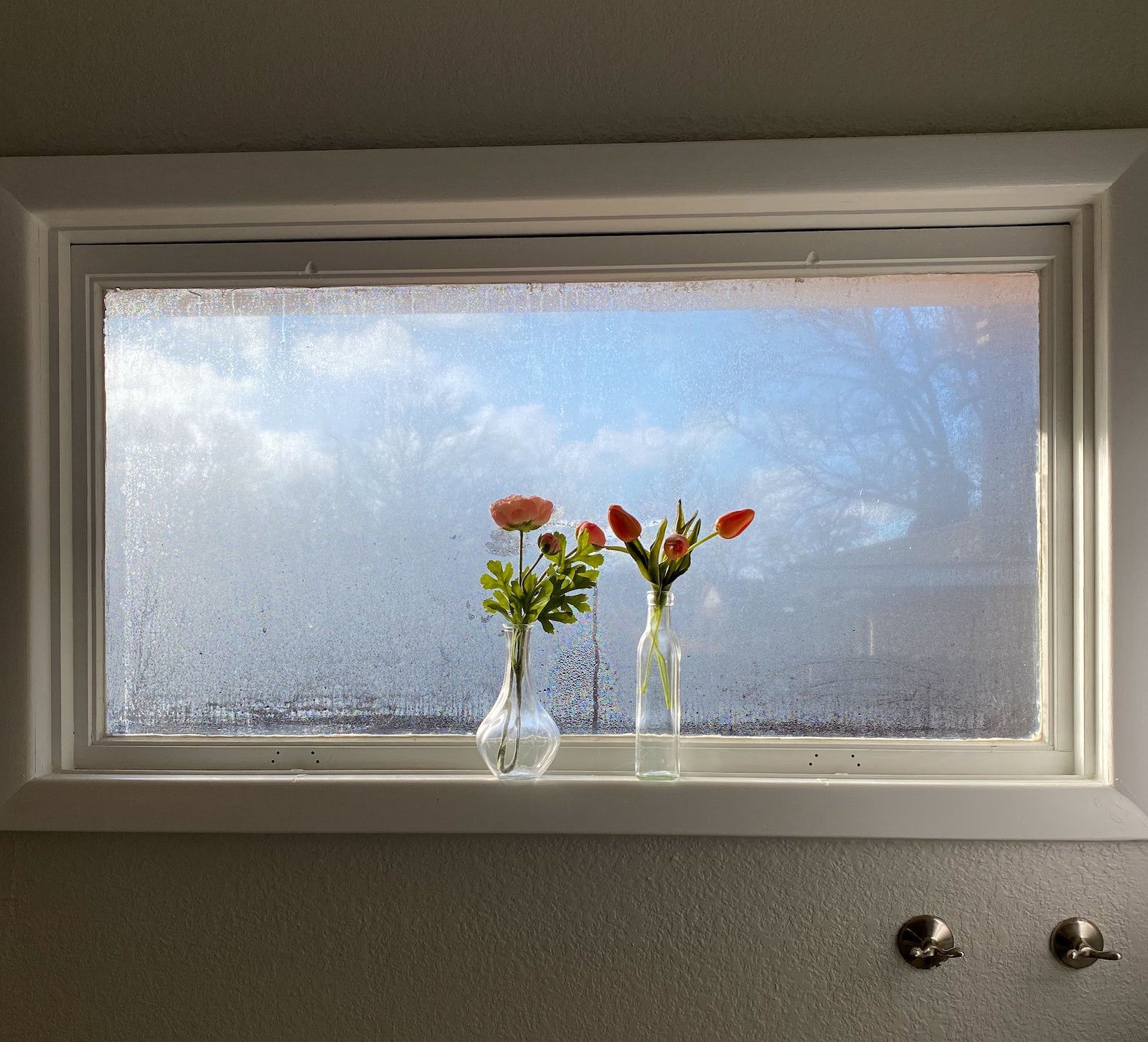
Because glass surfaces are usually some of the coldest parts of your home, condensation appears on windows first. This is generally in the form of water droplets or frost on the interior of your window. As interior air becomes drier or as the glass surface becomes warmer, condensation begins to evaporate.
What causes interior window condensation?
Condensation on the interior of windows and doors occurs when warm air comes into contact with cool glass. This is especially common in colder months, when indoor air is warmer and more humid and outdoor air tends to be cold and dry. Even if you aren’t running a humidifier, everyday activities like bathing, cooking and even breathing all contribute to the humidity in your home.
Replacing drafty windows and doors or installing a new roof or siding reduces air infiltration into your home, making a tighter seal. This tighter seal is great news for your energy costs, but a tightly-sealed home also retains more humidity, which means condensation on colder surfaces in the winter.
How can I reduce interior window condensation?
There are a number of ways you can cut down on the humidity you create in your home. Some ways to reduce air moisture include using a portable dehumidifier or installing a whole-home dehumidifier. When you’re cooking, cover pots and pans in an effort to keep excess humidity contained and be sure to run the kitchen exhaust fan while cooking. The same goes for bathroom fans. Leaving the bathroom fan on during and after a shower will help circulate humid air out of your home. Lastly, leaving interior doors open will help allow good air circulation, so humidity doesn’t build up in one space.
What causes interior window condensation?
Condensation on the interior of windows and doors occurs when warm air comes into contact with cool glass. This is especially common in colder months, when indoor air is warmer and more humid and outdoor air tends to be cold and dry. Even if you aren’t running a humidifier, everyday activities like bathing, cooking and even breathing all contribute to the humidity in your home.
Replacing drafty windows and doors or installing a new roof or siding reduces air infiltration into your home, making a tighter seal. This tighter seal is great news for your energy costs, but a tightly-sealed home also retains more humidity, which means condensation on colder surfaces in the winter.
How can I reduce interior window condensation?
There are a number of ways you can cut down on the humidity you create in your home. Some ways to reduce air moisture include using a portable dehumidifier or installing a whole-home dehumidifier. When you’re cooking, cover pots and pans in an effort to keep excess humidity contained and be sure to run the kitchen exhaust fan while cooking. The same goes for bathroom fans. Leaving the bathroom fan on during and after a shower will help circulate humid air out of your home. Lastly, leaving interior doors open will help allow good air circulation, so humidity doesn’t build up in one space.